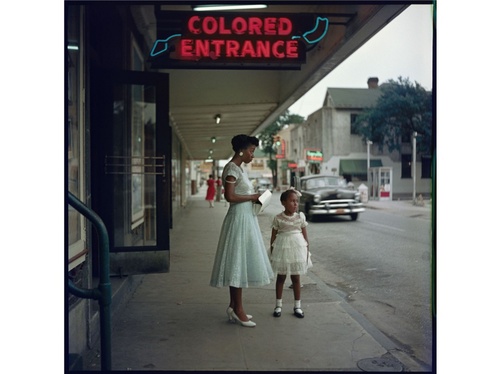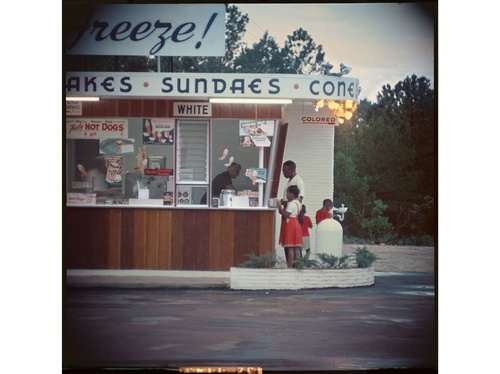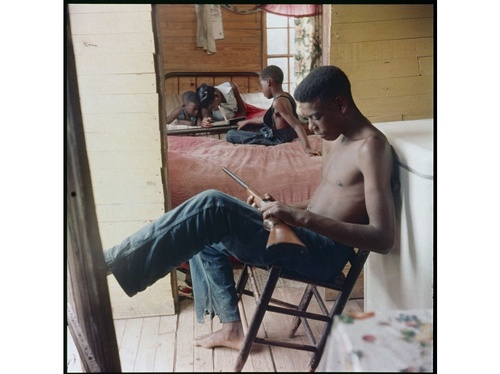-
Par Miss Zaverilal le 9 Mars 2015 à 21:59
This photography, untitled "White Only" was taken in 1963 by John Kouns, a white photographer.
It is in black and white. The scene takes place in New Orleans, USA.
It was a town really affected by segregation, due to a high rate of black people.The photo shows in the foreground the shop window of a laundromat, where it is written
"White only Maids in uniform accepted". Inside the shop, in the background, we can see two
white men, quietly waiting for the end of their washing, reading a newspaper.The message is shocking : whites and blacks don't have the same rights, even in the ordinary places.
Indeed, according to Wikipedia : "Segregation is separation of humans into racial groups in daily life.
It may apply to activities such as eating in a restaurant, (...) using a public toilet,
attending school, going to the movies, riding on a bus, or in the rental or purchase of a home".It is written "maids" and not "colored maids" : it implies that the ban is suspended for the maids
of white people, even if they are black - "maids in uniform" are accepted.
This is because black women at that time worked for white people.In fact the prohibition is not that black people are not authorised to come in the laundromat
but that they are not allowed to wash their own clothes in the same washing machines than white people.This idea is disgusting for them : they think that blacks are not clean.
A washing machine used to wash black's clothes cannot wash white's clothes : it could not clean anymore.On top of that, the photographer raises the issue of social classes : Whites are associated to bourgeoisie
(in the reflection, we can observe a huge house, which seems to be beautiful).We can consider that Whites who are in the shop are not rich enough to pay someone
to wash their own laundry : there is an economic segregation.The photographer also used the colours to make a point. Indeed, the ban is written in white on a black background.
Moreover, the white men are dark, because of luminosity whereas the washing machines are white.The sad truth at the time is that Black women were tight to do domestic tasks, painful
and badly paid: Whites considered themselves as "superior" to Blacks. Whites didn't hesitate showing
their disgust by separating washing machines : clothes which are in contact with their skin must be isolated.Swen Durieux
1ST2SA votre commentaire
votre commentaire
-
Par Miss Zaverilal le 6 Mars 2015 à 20:37
Here is the C.O. you had in class (this is actually the full speech).
Check it out !
 votre commentaire
votre commentaire
-
-
Par Miss Zaverilal le 3 Février 2015 à 11:45
Outsiders, Alabama, 1956
Grand Magasin, 1956
Terminal, Atlanta, 1956
Untitled, Alabama, 1956
W. Causey Jr. during the riots in Alabama, 1956
Window Shopping, Alabama, 1956
 votre commentaire
votre commentaire
-
Par Miss Zaverilal le 11 Novembre 2014 à 22:49
 votre commentaire
votre commentaire Suivre le flux RSS des articles de cette rubrique
Suivre le flux RSS des articles de cette rubrique Suivre le flux RSS des commentaires de cette rubrique
Suivre le flux RSS des commentaires de cette rubrique










